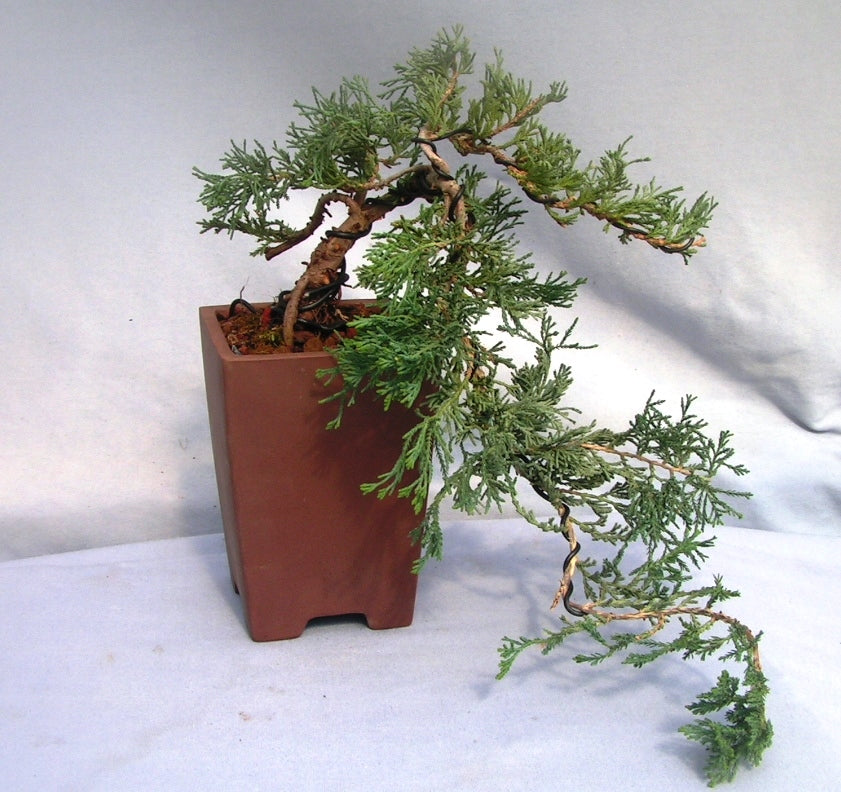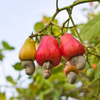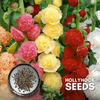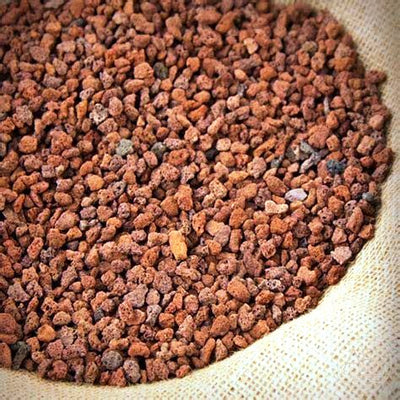
Bonsai Juniper Chinensis Cascade Style With Plastic Pot
Guaranteed Safe Checkout
Green Paradise Offers Healthy Bonsai
Juniper Chinensis Cascade Style Plant
About Bonsai Juniper Chinensis Cascade Style Plant
Bonsai Juniper Chinensis, also known as Juniperus chinensis, is a popular species of juniper used for bonsai cultivation. It is native to East Asia and is well-known for its resilience and adaptability, making it a favored choice among bonsai enthusiasts.
The "Cascade Style" is one of the traditional bonsai styles that seeks to mimic the growth patterns of trees growing on steep slopes or cliffs. In this style, the trunk of the bonsai emerges from the pot and cascades downward, resembling a tree growing on the edge of a cliff or hanging over a watercourse.
Here are some key features and characteristics of the Bonsai Juniper Chinensis Cascade Style plant:
Size and Appearance:
-
The Bonsai Juniper Chinensis Cascade Style plant typically has a compact size, with the cascading branches and foliage extending below the rim of the pot.
-
The foliage consists of scale-like needles that are usually green or blue-green in color, giving the tree an elegant and tranquil appearance.
Cascading Trunk:
-
The most distinguishing feature of the Cascade Style bonsai is the trunk's downward growth.
-
The trunk emerges from the pot at the soil level and then bends downward, creating an impression of a tree growing on a cliff.
-
The cascading trunk adds a sense of drama and movement to the bonsai.
Branching and Foliage:
-
The branches of the Bonsai Juniper Chinensis Cascade Style plant spread out horizontally from the trunk and then droop downward, following the line of the cascade.
-
The foliage is typically dense, and regular pruning and trimming are necessary to maintain the desired shape and proportion.
Pot Selection:
-
Choosing the right pot is essential for enhancing the overall aesthetics of the Cascade Style bonsai.
-
A pot with a wider base and narrower top is commonly used to complement the cascading trunk and provide stability to the tree.
-
Additionally, pots made from earthy and natural materials, such as clay or ceramic, are often preferred.
Care and Maintenance:
-
Bonsai Juniper Chinensis Cascade Style plants require regular care to ensure their health and beauty.
-
They thrive in well-draining soil, prefer a sunny location, and benefit from occasional misting to increase humidity.
-
Watering should be done carefully, allowing the soil to dry slightly between waterings. Pruning and wiring techniques are employed to shape the branches and maintain the desired cascade style.
Symbolism and Meaning:
-
Bonsai, in general, is associated with various symbolic meanings, such as harmony, patience, and contemplation.
-
The Cascade Style bonsai, with its flowing and dynamic form, often represents the beauty of nature's resilience and the concept of overcoming obstacles.
Overall, the Bonsai Juniper Chinensis Cascade Style plant is a visually striking bonsai tree that captures the essence of nature's cascading beauty. Its unique form and graceful appearance make it a captivating addition to any bonsai collection or as a standalone ornamental plant.
How To Grow Bonsai Juniper Chinensis Cascade Style plant
Growing a bonsai Juniper Chinensis in the cascade style can be a rewarding and beautiful project. The cascade style is characterized by a tree that appears to be growing on a slope or cliff, with its branches cascading downward.
Here are some general guidelines to help you grow a bonsai Juniper Chinensis in the cascade style:
Tree Selection:
-
Choose a healthy Juniper Chinensis sapling or nursery-grown tree.
-
Look for a tree with a straight trunk and suitable branch structure for the cascade style.
Pot Selection:
-
Select a suitable pot that complements the overall aesthetic of the cascade style.
-
The pot should be shallow and have a hole for drainage.
-
Cascade-style bonsai pots are often deeper on one side to enhance the illusion of the tree growing on a slope.
Pruning and Wiring:
-
Prune the branches and foliage to create the desired shape and cascade effect.
-
Wire the branches gently to guide them in the desired direction.
-
Be careful not to damage or stress the tree while wiring.
Repotting:
-
Carefully remove the tree from its nursery container and trim the roots slightly.
-
Place a layer of bonsai soil at the bottom of the pot and position the tree diagonally, leaning towards the front of the pot.
-
Fill the rest of the pot with bonsai soil, ensuring that the roots are adequately covered and stabilized.
Watering:
-
Juniper Chinensis prefers slightly dry conditions, so avoid overwatering.
-
Water the tree thoroughly when the soil feels slightly dry, but allow the soil to dry out between waterings to prevent root rot.
Sunlight and Temperature:
-
Place your bonsai in a location where it can receive sufficient sunlight.
-
Juniper Chinensis prefers full sun or partial shade.
-
Ensure the temperature is suitable for the species, as they have different temperature requirements depending on the variety.
Fertilization:
-
Use a balanced bonsai fertilizer during the growing season to provide essential nutrients.
-
Follow the application rates and frequency recommendations on fertiliser packaging.
Maintenance and Pruning:
-
Regularly maintain the shape of the tree by pruning and pinching back new growth.
-
Remove any dead or unhealthy branches.
-
Pay attention to the tree's overall balance and ensure that the cascading branches are well-distributed.
Protection from Extreme Conditions:
-
Protect your bonsai from extreme weather conditions such as strong winds, frost, or excessive heat.
-
Provide appropriate shelter or move the tree indoors during harsh seasons.
Patience and Training:
-
Growing a bonsai in the cascade style requires time and patience.
-
Monitor the tree's growth and adjust the wiring and pruning as needed to maintain the desired shape.
-
Training a bonsai into the cascade style may take several years to achieve the desired effect.
Remember that these are general guidelines, and it's important to study the specific needs and characteristics of the Juniper Chinensis variety you are working with. Bonsai cultivation requires ongoing care, observation, and adjustment to ensure the health and aesthetic appeal of your tree.
Care and Maintenance:
-
Bonsai Juniper Chinensis Cascade Style plants require regular care to ensure their health and beauty.
-
They thrive in well-draining soil, prefer a sunny location, and benefit from occasional misting to increase humidity.
-
Watering should be done carefully, allowing the soil to dry slightly between waterings.
-
Pruning and wiring techniques are employed to shape the branches and maintain the desired cascade style.
Symbolism and Meaning:
-
Bonsai, in general, is associated with various symbolic meanings, such as harmony, patience, and contemplation.
-
The Cascade Style bonsai, with its flowing and dynamic form, often represents the beauty of nature's resilience and the concept of overcoming obstacles.
Overall, the Bonsai Juniper Chinensis Cascade Style plant is a visually striking bonsai tree that captures the essence of nature's cascading beauty. Its unique form and graceful appearance make it a captivating addition to any bonsai collection or as a standalone ornamental plant.


















